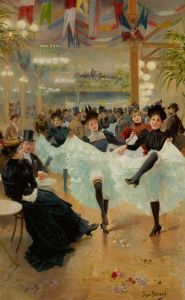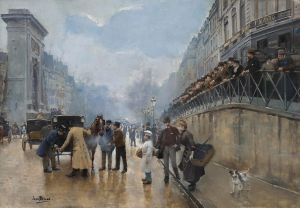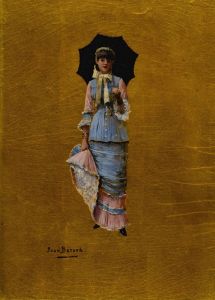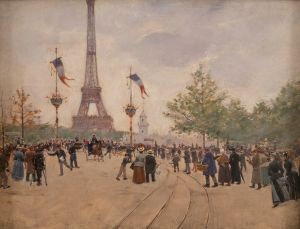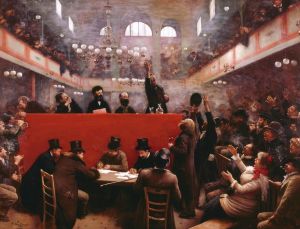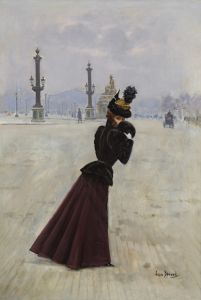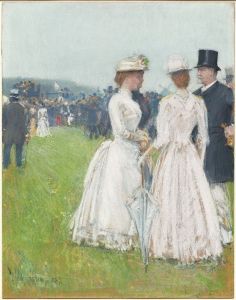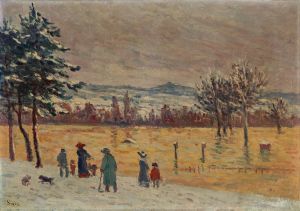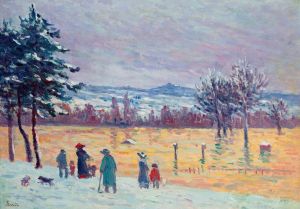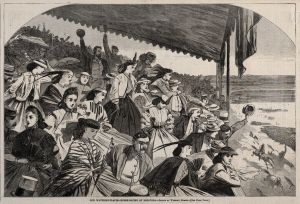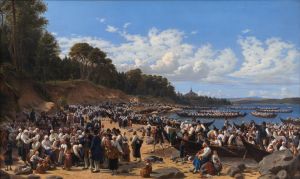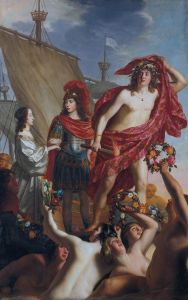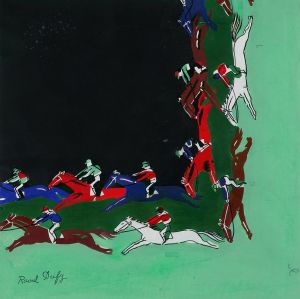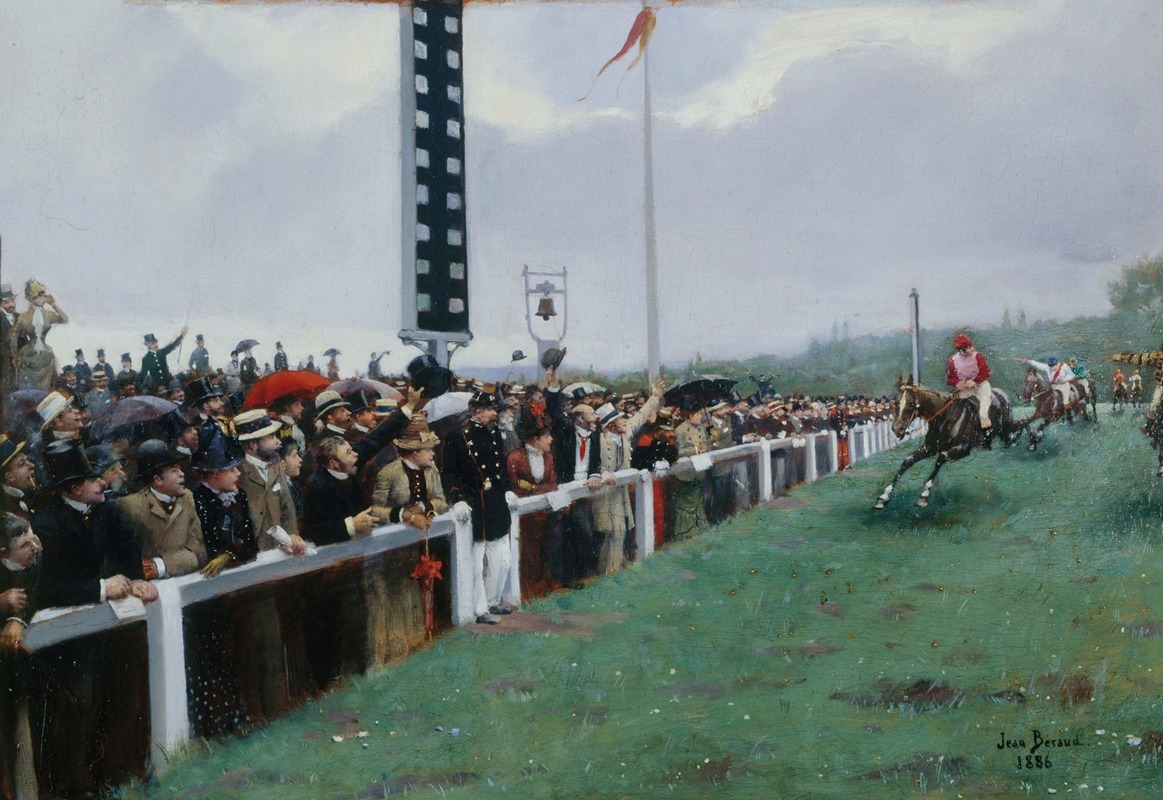
Courses à Longchamp ; l’arrivée au poteau
A hand-painted replica of Jean Béraud’s masterpiece Courses à Longchamp ; l’arrivée au poteau, meticulously crafted by professional artists to capture the true essence of the original. Each piece is created with museum-quality canvas and rare mineral pigments, carefully painted by experienced artists with delicate brushstrokes and rich, layered colors to perfectly recreate the texture of the original artwork. Unlike machine-printed reproductions, this hand-painted version brings the painting to life, infused with the artist’s emotions and skill in every stroke. Whether for personal collection or home decoration, it instantly elevates the artistic atmosphere of any space.
"Courses à Longchamp ; l’arrivée au poteau" is a painting by the French artist Jean Béraud, created in the late 19th century. Jean Béraud (1849–1935) was a notable painter known for his depictions of Parisian life during the Belle Époque. His works often capture the vibrancy and elegance of Paris, focusing on its streets, cafes, and social scenes.
This particular painting, "Courses à Longchamp ; l’arrivée au poteau," translates to "Races at Longchamp; the Finish Line." It depicts a horse race at the Longchamp Racecourse, a famous venue for horse racing located in the Bois de Boulogne, Paris. The racecourse was inaugurated in 1857 and quickly became a popular spot for both the elite and the general public, making it a fitting subject for Béraud's work.
In the painting, Béraud captures the excitement and dynamism of the horse race. The composition focuses on the moment the horses cross the finish line, with jockeys leaning forward in their saddles, urging their mounts to the last burst of speed. The crowd in the background is animated, with spectators eagerly watching the race, some standing and others seated, reflecting the social diversity of the attendees.
Béraud's attention to detail is evident in the way he portrays the horses and jockeys, as well as the spectators' attire, which is indicative of the fashion of the time. The painting also showcases Béraud's skill in capturing movement and emotion, making the viewer feel the intensity and thrill of the race.
The use of light and color in "Courses à Longchamp ; l’arrivée au poteau" is typical of Béraud's style. He employs a naturalistic palette, with careful attention to the play of light and shadow, which adds depth and realism to the scene. The overall effect is one of immediacy and liveliness, drawing the viewer into the moment.
Jean Béraud was a contemporary of the Impressionists, and while his style is more aligned with realism, his works share the Impressionists' interest in modern life and the fleeting moments of contemporary urban existence. Béraud's paintings are often celebrated for their historical value, providing a window into the social and cultural life of Paris during the late 19th and early 20th centuries.
"Courses à Longchamp ; l’arrivée au poteau" is an excellent example of Béraud's ability to capture the essence of Parisian society and its leisure activities. The painting not only highlights the sport of horse racing but also reflects the broader cultural and social context of the time, making it a valuable piece for both art historians and enthusiasts of the Belle Époque period.
Today, Jean Béraud's works, including "Courses à Longchamp ; l’arrivée au poteau," are held in various public and private collections, appreciated for their artistic merit and historical significance.





